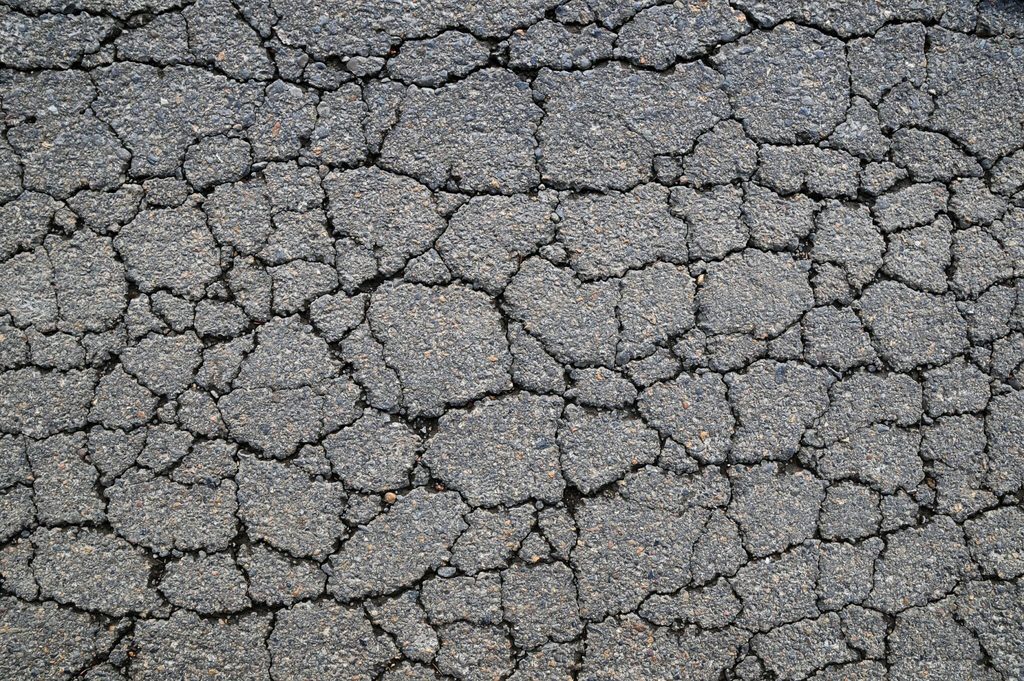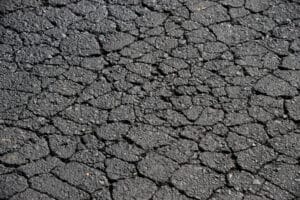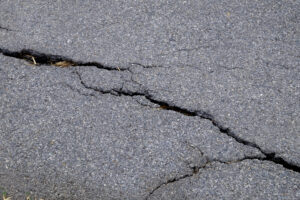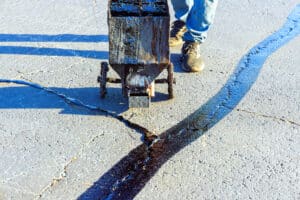Property management means overseeing responsibility for every aspect of the property. From the top of each roof to the sub base of your pavement — which is exactly where alligator cracks come from. Alligator cracking asphalt looks like the scales of a reptile when dry. When it’s raining, they look like a puddle in a low spot in your pavement. This type of pavement crack is not just unattractive, it is also an early sign of deeper trouble and potentially dangerous for your residents.
In this article, we will answer define alligator cracking, explain its importance, and give tips and reminders for property managers dealing with this pavement problem.
What is Alligator Cracking?
Alligator cracking, also known as fatigue cracking, is a type of crack that appears in asphalt pavement. It’s called this because it looks like the scaly skin of an alligator. The cracks form in a matrix, an irregular grid of roughly triangular or rectangular sections. In truth, this is compression cracking. It’s similar to the way a wood panel cracks when you press down on the surface but don’t break the board.
Alligator cracking starts as a spiderweb of cracks, then becomes an ever-worsening low spot in the pavement with wider and more fractured cracks throughout the damaged area.
Why Alligator Cracks Form
Alligator cracks are the result of the substrate — the supporting layer under the asphalt — giving way to pressure. When the substrate is weak or weakened, it can’t hold the weight of cars and trucks driving by. This causes the material underneath the asphalt to collapse. While the asphalt is strong, it also sinks as the substrate sinks. The pressure then pushes the top layer of asphalt down into the softened substrate, causing the compression crack pattern known as alligator cracking.
Read More: Why Asphalt Cracks Form?
3 Major Problems with Alligator Cracking Asphalt
As a property manager, alligator cracks pose three serious problems:
The first is safety. A severe alligator crack forms a jagged pit and the makings of a pothole. Even a shallow alligator cracked area can form a risk for trip-and-fall accidents with your local pedestrians, while deeper alligator cracks can scrape and even damage vehicles.
The second concern is one of property maintenance. Alligator cracks do not form and stop, they get worse over time. The original problem persists while the cracks allow moisture in through the asphalt layers to further weaken the area. Alligator cracks only get deeper and more jagged if left alone.
The third reason property managers should care is the easiest to see: Alligator cracks aren’t pretty. They mar your otherwise beautiful property and make a well-maintained space look like it’s falling into disrepair. Don’t let a scaly problem with your pavement reduce the safety, quality, or appearance of the properties you manage.
How to Repair Alligator Cracking
Alligator cracks cannot be fixed on the surface level. Because they are caused by a collapse of the sub-base underneath, just sealing or refilling the asphalt will not fix your problem, it will collapse again. The only effective asphalt repair to fix alligator cracking is to strip back the broken asphalt, build a stronger sub-base, and reinstall a new layer of asphalt over it.
1. Seal the Cracks as a Temporary Solution
If you need time to schedule a major pavement repair — most properties do — start with a sealing layer. Rain and added pressure put your pavement at risk. You can reduce that risk and temporarily smooth over the space with a quick sealant layer. This will prevent any water seepage and further damage, and reduce the chance of damage to pedestrians and vehicles until you have the sub-base reinstalled.
2. Expose the Sub-Base
When you’re ready for major asphalt repair, the first step is to strip back the cracked pavement and expose the damaged or eroded sub-base. You will want to strip back beyond the alligator crack to ensure that the entire space is more secure, and that another pressure crack doesn’t form nearby the newly repaired area.
3. Reinforce or Replace the Sub-Base
Now remove the damaged sub-base and put down a stronger, more stable sub-base in its place. Use this opportunity to reinforce the sub-base in each direction from the space you access. Choose a sub-base material that is less likely to be affected by moisture and regional weather patterns. For example, annual snowmelt can get in under the pavement to damage your sub-base.
4. Replace the Asphalt Layer
Finally, you’re ready to re-lay your asphalt. With a fresh, stable sub-base, the new asphalt will resurface your pavement and return the driveway or parking lot back to its beautiful top condition.
What Happens if Alligator Cracks Aren’t Fixed?
If you leave an alligator crack alone, it will get worse. Because the substrate is already damaged and collapsed beneath the asphalt layer, the asphalt itself will continue the compression collapse. Alligator cracks get worse because the substrate continues to erode and because cracks allow moisture into the substrate to further soften it and increase the collapse. This is why alligator cracks get both deeper and wider to form a shattered pit in your pavement over time.
3 Tips for Handling Alligator Cracking Asphalt on Your Property
1. Forward-Planning Your Sub-Base and Asphalt
How can you prevent alligator cracks in the future? It’s all about how your asphalt was installed, more importantly, its sub-base, and the weather. So each time you find yourself planning for asphalt installation, pay special care to the sub-base in alignment with your local weather conditions to avoid collapsing sub-base layers and compression alligator cracks in the future.
2. Watch for Alligator Cracking After Floods and Snowmelt
The most likely cause of alligator cracks is local floods and snow-melt. Any time there is excessive water that seeps into the soil layer, your sub-base may be at risk. Pay special attention to your pavement after really wet weather, as this is when alligator cracks are most likely to begin.
3. Address Alligator Cracks Promptly in the Future
Armed with the knowledge of how alligator cracks become worse, decide when it’s time to schedule your sub-base replacement repair. Because alligator cracks develop over months, sometimes years, you have some time to plan the best time to cordon off your pavement for repairs. Plan your parking lot repairs as soon as it is convenient for your property and residents. This ensures the problem is dealt with swiftly before the property takes further damage.
Repairing Alligator Cracks on Your Property
Does your property have alligator cracks that need asphalt repair? We have the expertise and the understanding of your property management requirements to enact your pavement repairs. Contact Superior Asphalt today to schedule a preventative sealcoating, and then we’ll work together to schedule the best time to get your sub-base and pavement back into the top condition that your property deserves.
Read More:




